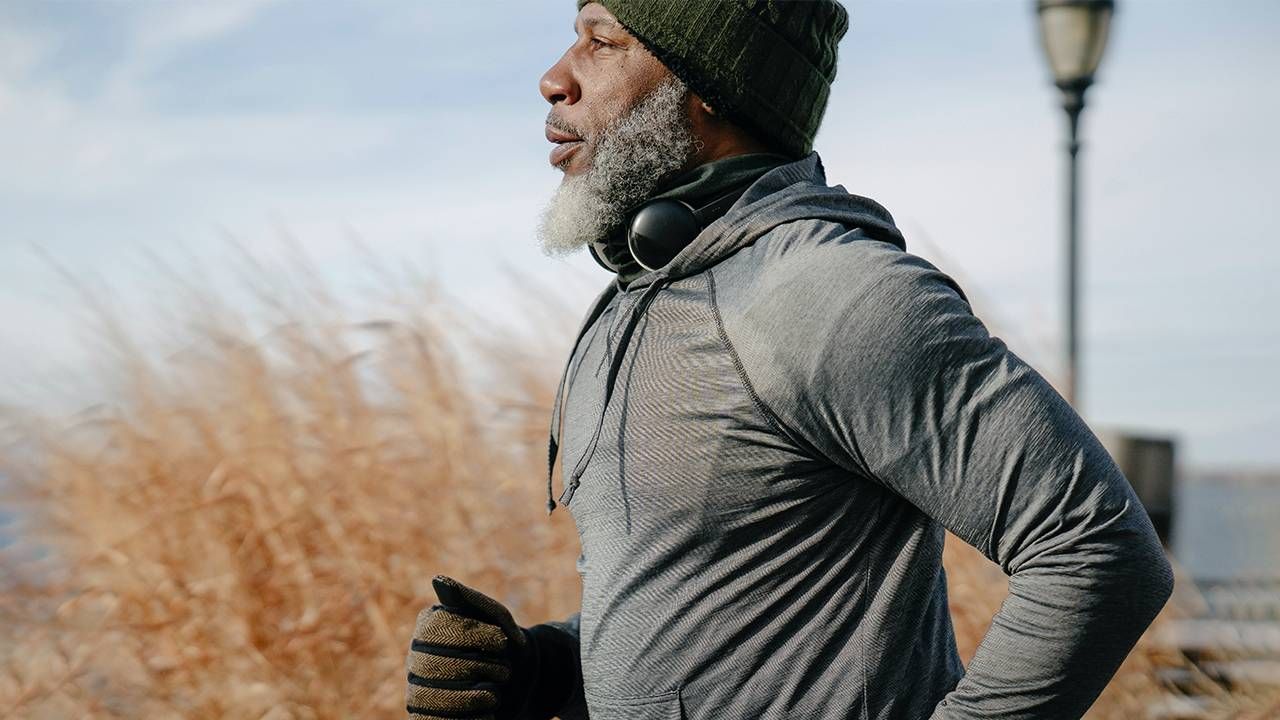Beyond Yoga: Elevating Mind-Body Exercise to Battle Cognitive Decline
Combining physical activity with cognitive training yields better results than either alone. Here’s what you can do.
Not so long ago, it was assumed that cognitive decline was just a natural part of aging. In the past decade, though, scientific and medical researchers have been studying ways to slow down that process, and possibly even prevent the serious decline into dementia through therapeutic and lifestyle interventions.

Physical activity and cognitive training are two lifestyle factors that have been widely studied, with each showing a degree of benefit. More recently, however, scientists, and a few entrepreneurs, have been combining the two in hopes of achieving better outcomes. In this article, we take a look at that science — and the emerging technology it is spawning.
Some Promising Findings
A 2020 paper published in the journal Ageing Research Reviews scrutinized over 40 studies on the topic and concluded that doing physical and brain exercises simultaneously does indeed benefit cognitive performance more than doing either alone.
" ... Combined training can enhance cognitive function, possibly to a larger extent than exercise alone, as physical and cognitive activities may have positive synergistic effects."
To learn more about those benefits, we spoke with Dr. Esther Karssemeijer of Nijmegen, Netherlands, who wrote her PhD thesis on the topic of combined physical and cognitive exercise at Radboud University, Netherlands.
"There have been a lot of studies on the topic," Karssemeijer said, "and they've found that combined training can enhance cognitive function, possibly to a larger extent than exercise alone, as physical and cognitive activities may have positive synergistic effects."
Karssemeijer also noted that doing physical activity at the same time as performing cognitive tasks, known in the research as "simultaneous" training, seems to be more effective than doing physical activity right before or after a session of cognitive training, known as "sequential" training.
What Counts as Simultaneous Training?
Yoga is often thought of as "mind-body" exercise: an activity that seeks to bring the mind and body into harmony through movement and breath. That can be fantastic for reducing stress and improving focus, all while creating a little movement and improving flexibility.
However, the simultaneous training being studied by brain scientists is more like "mind+body" exercise: two different activities done at once, each requiring a different type of focus and attention.
It's this "dual-task" training that appears to confer the greater benefits. By way of example, here are three companies that have created products or services based on the simultaneous training concept.
Businesses Responding to the Science
Alison Weinlaeder is a speech language pathologist in St. Paul, Minnesota who does cognitive rehabilitation with stroke and traumatic brain injury patients. She started her company CardioMelon in the midst of the COVID-19 pandemic because she saw the need to get people moving at home.
Weinlaeder said, "I often get referrals of patients whose brains are simply changing with age. They always ask what exercises they can do to make their brain stronger, and I ask them what they're currently doing. Usually they aren't doing physical exercise." She wanted a tool where patients could move their bodies while they worked their brains, but there wasn't one, so she created it.
CardioMelon is a subscription-based service of over 100 videos, each about 30 minutes long, that combine various types of physical exercise with various types of cognitive challenges. In a sample video on YouTube, exercisers are asked to answer basic math and word problems while stepping, squatting and doing a number of other easy to moderate-intensity exercises.
"I'm diving into a world knowing there maybe isn't enough research," Weinlaeder said, "so maybe my product can help with that." To that end, she has partnered with the American Heart Association on a study looking at CardioMelon's effects on cognition.
'A 360-Degree Cognitive Gym'
In Camarillo, California, Cathi Lamberti, a former school teacher turned entrepreneur, has come up with a very different approach to simultaneous training. SmartFit is an electronic gaming system Lamberti described as "a 360-degree cognitive gym that you respond to with your decision-making brain." The system can be configured in countless different ways, making it accessible to people with a wide variety of physical abilities.
When he saw a SmartFit demo four years ago, Dr. Charles Liu, professor of neurological surgery and director of the Neurorestoration Center at USC in Los Angeles was curious about its potential for adults with cognitive disabilities. He asked Lamberti to let him and his collaborators use the device in a study involving Parkinson's patients.
"The main task is going out through the neighborhood, down the virtual bike path to complete some errands for the day."
"It was a very small study, involving only ten patients," Liu said, "just to assess the safety and feasibility of using the device with Parkinson's patients." However, the results were promising enough to warrant interest in conducting larger follow-up studies.
SmartFit is currently being marketed only to institutions such as long-term, retirement and memory care facilities, rehab centers treating people diagnosed with Parkinson's disease or who have suffered a stroke or traumatic brain injury, as well as for sports applications. Lamberti said the company is working on a model for home use they hope to roll out sometime in 2023.
Another type of simultaneous training device, the Integrated Physical and Cognitive Exercise System (iPACES) was created by Cay Anderson-Hanley, professor of psychology and co-director of neuroscience at Union College in Schenectady, New York.
Developed as a potential therapy for individuals diagnosed with Mild Cognitive Impairment (MCI), iPACES runs on a tablet, can be used with any home exercise bike, and looks just like a video game, or in this case, an "exergame."
"The main task is going out through the neighborhood, down the virtual bike path to complete some errands for the day," Anderson-Hanley said.
Users are given a list of tasks to complete, and as they pedal along, they come to a fork in the road, or two exit signs. "Then they have to remember where they were going next and decide which route to take, but the more complex part is when they turn around and are asked to retrace their route back home."
In a small 2018 pilot study on individuals with MCI and their caregivers, results were favorable, prompting a larger follow-up study of over 100 individuals, currently in progress. Anderson-Hanley said, "If this trial is positive, we hope other researchers will want to use the device in studies for independent verification."
What You Can Do at Home
The three products reviewed above are all quite different from one another, so we wondered what kinds of things people can do at home to get similar positive effects.
Karssemeijer said, "The sort of activity doesn't matter that much. There have been all kinds of different interventions — dancing, cycling, walking and doing cognitive training at the same time."
An example of simpler simultaneous training might be pedaling a stationary bike or walking on a treadmill while you watch an educational program
In fact, variety may be key, because there are many different facets to cognitive function, and different activities stimulate different areas. It's also important to keep challenging yourself rather than simply doing the same routine over and over.
An example of simpler simultaneous training might be pedaling a stationary bike or walking on a treadmill while you watch an educational program on your TV or mobile device. Something a bit more challenging could be cycling or walking outdoors, where you need to negotiate terrain, while you listen to a foreign language lesson. A difficult session could be juggling tennis balls while doing long division in your head or trying to spell difficult words.
The possibilities are nearly endless, and the important thing is to choose activities you can do safely and that you enjoy. As Karssemeijer put it, "Just do what you like and are able to do."
Limitations of the Current Research
When it comes to cognitive decline, and especially dementia, there are a multitude of underlying genetic, epigenetic, environmental and lifestyle factors at play. Therefore, it's unlikely that this therapy or any other single approach would be the "silver bullet" we're all hoping for. Also, the favorable results seen in studies so far have been limited primarily to healthy adults or those with only mild cognitive impairment.
"It depends on the combination of physical and mental exercises," Anderson-Hanley said, "but generally the more advanced the decline, the less the effects."
Karssemeijer agreed and noted that her own studies involving people with dementia found improvement only in psychomotor speed, but not other areas of cognition. She explained, "An increase in severity of neuro-cognitive disorder may lead to a decrease of effect."
But positive outcomes can be tough to measure when it comes to cognitive decline.
Anderson-Hanley noted that, "In MCI the expectation is pretty much one of decline toward lower functioning and dementia. So in my view, when we target MCI for these interventions, we're not necessarily looking for straightforward improvement. In terms of reversing it, I won't rule that out entirely, because in some cases that may be the trajectory, but what we're really trying to do is slow the decline."
Also, Karrsemeijer's research had another big positive outcome. "One of the most important findings was that, although we didn't find additional benefit over exercise, adherence to exercise in the combined group was significantly higher than with the exercise-only group. It was more fun and interactive, so this is a method to improve physical activity in people with dementia."
Anderson-Hanley summed things up well when she said, "Exercise, when you pick it up at any age, can have a meaningful impact on brain health. And if one could choose an activity that has a combined physical and mental component with a pull for more mental engagement that would be best."


